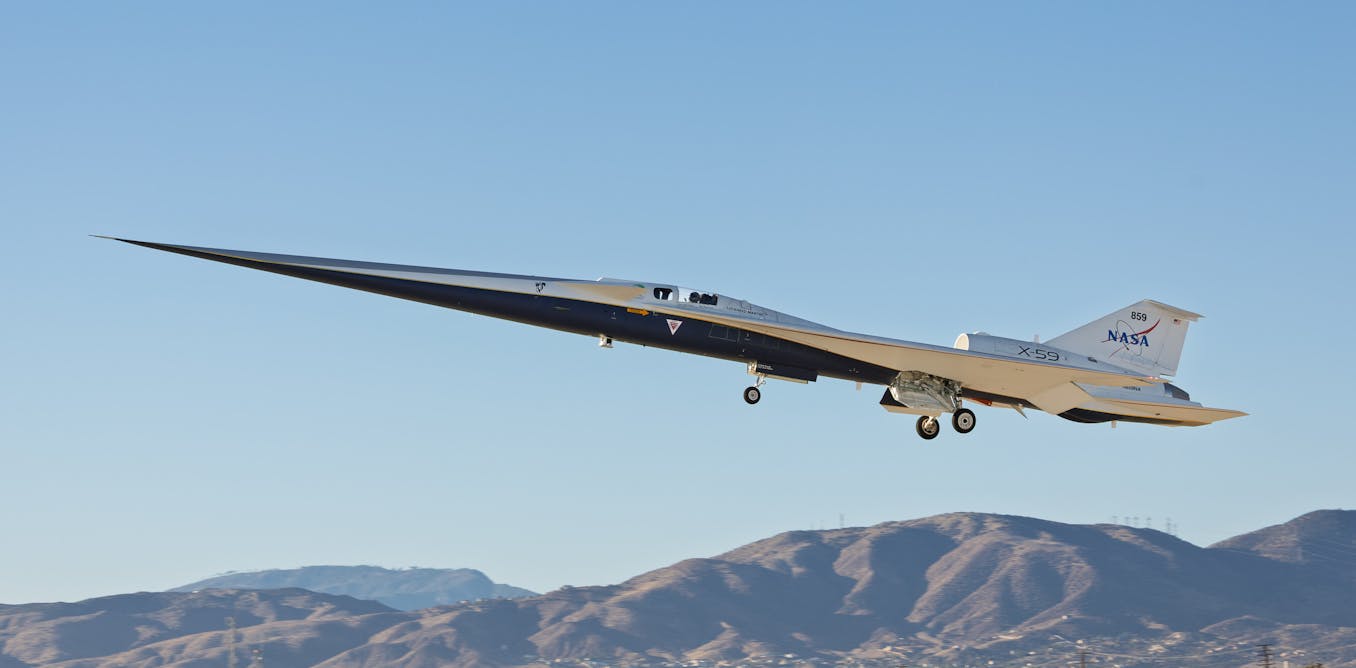6 Tips on Being a Successful Entrepreneur | John Mullins | TED
Entrepreneurship is a unique and challenging journey that requires a certain mindset and approach. In this TED Talk, John Mullins discusses six counterconventional mindsets that successful entrepreneurs often possess.
Firstly, Mullins highlights the importance of adopting a “Yes, we can” attitude. This mindset encourages entrepreneurs to embrace opportunities that lie beyond their core competencies, just as Lynda Weinman did when she transformed her graphic design teaching website into the platform we now know as LinkedIn Learning.
Furthermore, Mullins emphasizes that entrepreneurs should prioritize problem-solving over product development. For instance, John Thorne’s focus on developing a surgical forceps that doesn’t stick to human tissue led to a successful business venture.
Mullins also discusses the significance of thinking narrowly instead of broadly. Phil Knight and Bill Bowerman’s understanding of the specific needs of elite distance runners led to the creation of Nike, a thriving athletic footwear and apparel company.
Throughout the TED Talk, Mullins challenges traditional business practices and encourages aspiring entrepreneurs to embrace unconventional thinking. By following these counterconventional mindsets, individuals can increase their chances of achieving success in the world of entrepreneurship.
Watch the video by TED
In 1995, a graphic design teacher named Lynda Weinman, and also an aspiring entrepreneur, decided to get the website Lynda.com. She did so because she needed a sandbox to play in, with the new graphic-design tools, the digital tools that were being developed at that time: Photoshop, Illustrator and many more.
And she needed a place to put her students’ work so all could see it. Well, she put that website together, and the business began to grow. And in 2002, she discovered it could be much, much more, so she moved all of her teaching online. Later, the business was sold to LinkedIn,
Who renamed it LinkedIn Learning, sold for 1.5 billion US dollars. Lynda is the poster child for what I call the counterconventional mindsets of entrepreneurs. So I want to tell you about these mindsets today, and here we go. So, number one, why do I call them counterconventional? First, these six mindsets run counter
To the best practices, as we call them, that are done in big companies today. They fly in the face of much of what we teach at London Business School and other business schools about strategy, about marketing, about risk and about much more. Now, you might say, “John, what do you mean by ‘mindset?’”
A mindset, of course, is up here, right? It’s those things, attitudes, habits, thoughts, mental inclination which, when something comes our way, predetermines the response we make to that something that comes our way, and those somethings, as we entrepreneurs call them, are opportunities. So I want to tell you about these six mindsets,
And the first one, I call “Yes, we can.” Now, B-school strategy 101 says the following: what we’re supposed to do, in a company, is stick to our knitting. We’ve got to figure out what we’re really good at — we call them core competencies —
And we’ve got to build on them, invest in them, nurture them, make them more robust. And if somebody comes along and says, “Can you do something different, that’s outside of that?” what are we supposed to say? “No, I’m sorry, we don’t do that around here.” Well … A Brazilian entrepreneur named Arnold Correia
Built a wonderful business that, today, is called Atmo Digital, by disregarding those rules. He’d already reinvented his business twice, to become a major provider of event management and production services, when one of his customers said to him, “You know, I have 260 stores scattered all around Brazil,” and Brazil is a big country,
“and I’d like to be able to broadcast training and motivational events to the stores in real time. So, Arnold, could we put televisions in the training room of all my stores, and could we build a satellite uplink so we can send all this wonderful stuff to the stores?” So what did he say?
He said, “Yes, we could do that,” even though he knew nothing about satellite technology, had never operated outside São Paulo, but he got it done. Then, several years later, some of the other customers, one of them in particular, Walmart, said, “You know, it’s nice that we have all of these television screens
In the back room of the store, but wouldn’t it be cool if we had them on the sales floor? Because then, we could run advertising, so when the customer walks down the aisle for detergent, perhaps there’s an ad for Procter and Gamble’s detergent in that aisle?”
And what did Arnold say to that request? “Yes, we can do that.” Over a period of years, Arnold reinvented his business, fundamentally, four different times, by saying, when a customer wanted something new that lay outside of his core competencies, “Yes, we can.” The second one I want to tell you about,
I call “problem-first, not product-first logic.” So in big companies today, it’s all about the products. So while I’m in the US, my family and I have used Tide, for many years, to wash our clothes. And we get a chuckle, every now and then,
Because we can tell a new brand manager has come along, because what happens, they change the product, right? They take the blue speckles out of it and turn them green. And they call it “new, improved.” Is this innovation, guys? I’m not so sure. Coca-Cola, what is there?
There was Classic Coke, and then, there was New Coke. That didn’t work out too well. Then, there was Diet Coke, Coke Zero and Vanilla Coke and Cherry Coke, lots of Cokes. I don’t think this is what innovation is all about. But for entrepreneurs, we don’t focus on products, we focus on problems.
A guy named Jonathan Thorne developed a technology that did something very useful. This instrument you see in front of you is called a surgical forceps. It’s the tool that almost every surgeon, in any kind of medical discipline, uses to do his or her work. But there’s a problem with these surgical forceps —
They stick to human tissue. So imagine you’re having a facelift, and the plastic surgeon is doing the final touches, but the tissue sticks to the forceps. Maybe it’s not going to look quite as good as it was supposed to look. And maybe the plastic surgeon is going to get a little frustrated,
And it’s going to take longer to do the work. And John said, “You know, that’s a problem I think I can solve,” with a new silver-nickel alloy that he had developed. It turned out the business didn’t grow very fast, focusing on plastic surgeons. So he said, “I wonder if there’s another surgical specialty
That has an even bigger problem that I could solve,” and he discovered one, and that’s neurosurgeons. And neurosurgeons work in two places on our bodies, in our spines and in our brain. So I hope you never have brain surgery, and I hope I never have it,
But if they have to take a little tumor out, I hope the forceps don’t stick to some other tissues, because I kind of want to keep all the brain cells I can, right? John Thorne built a fantastic business, sold it some years later to Stryker. Stryker is very happy,
John and his investors are very happy too. Why? Because John focused on solving problems, not on thinking about products. The next one, I call it “think narrow, not broad.” Like John Thorne, an entrepreneur I’m going to tell you about focused on a problem but thought very narrowly about the target market.
But the big-company wisdom doesn’t want narrow target markets, it wants big target markets, right? Because you’ve got to move the needle. Why would a big company mess around with something small? Like John Thorne, Philip Knight and Bill Bowerman, when they founded Nike, a company we all know very well today,
Had identified a problem, but it was a problem that a very narrow target market had. Phil Knight was a runner, a distance runner, and he could run almost, not quite, a four-minute mile, and Bill Bowerman was his track coach. And there was a problem with their shoes,
Because running shoes, in those days, were really made for sprinters. And when sprinters train, they run around the track. It’s a nice, smooth track. But distance runners don’t run around tracks. Where do they run? They run on country paths and dirt roads, and they’re always stepping on sticks and rocks,
And so they get sprained ankles. And they run mile after mile after mile, and they get shin splints. Well, Knight and Bowerman said, “We need better shoes, shoes that are made especially for distance runners, especially elite distance runners, who really train a whole lot. So we’re going to build a better shoe
That’s going to have better lateral stability, a wider footbed. It’s going to have a little more cushioning in it, to protect against those shin splints — and by the way, if it’s a little bit lighter-weight, a few ounces lighter, times all the steps in running a mile, or a two-mile, or a marathon,
It’s going to make for faster race times too.” So we know what happened with Nike, right? Once they developed the skills to design shoes explicitly made for a target market, a narrow one, and once they learned to import those shoes from Asia, and once they learned to get athletes to adopt those shoes,
What did they do? Well, John McEnroe in tennis, Michael Jordan in basketball came next, and we know what the story is with Nike today. They’re the global leader in athletic footwear and much more. OK, the next one — “asking for the cash, and riding the float.” Big companies today are awash in cash.
Even in these tricky times we are in today, there is cash all over the place, right? Merck, in 2018, spent all this money giving money back to shareholders through stock buybacks and dividends, and they could only find 10 billion worth of R and D to do, with all that cash.
Is something wrong here? I think this just doesn’t feel right. But for entrepreneurs like Elon Musk and the Tesla team, cash is the lifeblood of the entrepreneurial venture. So when Musk joined the Tesla team, he said, “What’s the plan here?” And that team had a plan,
And it was to build a really fancy sports car, make a lot of money from that one, use that money to build a somewhat lower-priced car, make some money from that one, and then, we’re going to build a mass-market car that more people can afford. And in so doing,
We’re going to make a real dent in the emissions problem that the global automobile industry creates. Well, what Musk said is, “Let’s go see if we can sell some cars.” So … they did a little road show in California, and they invited people, on this little road show, with three characteristics.
Number one, they cared about the environment. Number two, they were wealthy. And number three, they thought it might be cool to have the next big thing parked in their driveway. Well, guess what? They sold 100 Tesla Roadsters for 100,000 dollars each, cash on the barrelhead, paid tonight. How much? Do the math.
How much money have they got to start building Roadsters? 10 million US dollars in the bank, in cash, before they had built Roadster number one. That principle has carried Tesla all the way through its journey. So when they introduced the Model 3, several years ago, nearly half a million consumers put down deposits
Of 1,000 dollars each. Do that math. Half a million consumers, 1,000 dollars each — half a billion dollars, in the bank, in cash, with which to begin doing the engineering, build the tooling, fit out the factory and more. Wouldn’t you like to build your entrepreneurial venture with that kind of business model?
OK, the next one. I call it “beg, borrow, but please, please don’t steal.” In B-school finance, we teach our students how to analyze whether a project’s any good. So you figure out how much investment you have to do, and then, you figure out what the cash flow is going to be,
Going forward, year after year, for five years, 10 years or whatever. And then, you ask yourself, “Well, is that return on that investment sufficient?” And if the ROI is good enough, then you do the project. That’s the idea. But for Tristram Mayhew, and Rebecca Mayhew, his wife,
Who built a wonderful business in the UK, called Go Ape, a treetop adventure business, they didn’t think that way at all. They said, “We want to build a treetop adventure business, here in the UK.” They’d seen one in France, that they liked, on a vacation. “So where can we get some trees?”
Well … Who’s got trees in the UK? It turns out the UK Forestry Commission has trees in the UK, lots of them, in all these Forestry Commission sites, and the Forestry Commission was very interested in increasing their visitor count. Well, what better way to increase their visitor count
Than to have a Go Ape treetop adventure course on their land? So what Tris and Becs essentially did was go to the Forestry Commission and say, “Look, if you’ll give us a chance to build five of these and show you that it works,
We’d like an exclusive for the rest of them, for 25 years.” The deal was done. Today, there are more than 30 Go Ape adventure sites across the UK, there are a whole bunch of them in the US, and how did that happen? Because they borrowed most of the assets they needed.
They borrowed the trees, they borrowed the loos, they borrowed the parking lots, all that stuff. All they had to do was put their kit on the trees. Pretty cool. Now, entrepreneurs and permission are kind of like oil and water. If you’re an entrepreneur, you kind of know that, right?
But in a big company today, if you want to get something new done, something entrepreneurial, something that’s maybe a little different than the norm, you’ve got to pass it through the lawyers first. Because there are a lot of regulations everywhere,
And you don’t want to do something that’s going to land a top exec in jail. So it’s really hard to get a “yes” answer to doing something that’s new and innovative, and it takes a long time. But it’s really easy to get a “no.” For entrepreneurs, however, like Travis Kalanick and Garrett Camp,
Who founded Uber, do you think they would have been wise to ask the permission of the San Francisco regulators? “Can we start a taxi company without any taxis?” No, maybe not, right? Because, had they asked, what do you think the regulators would have said? “There’s no way you’re going to do that.
That’s going to threaten the current taxi industry.” So entrepreneurs don’t ask permission, they just get on with it. Now, I don’t condone many of the things that Uber did, along their journey, many of them unethical, some of them, probably, illegal. But the principle of entrepreneurs just getting on with it,
When the regulations are perhaps ambiguous or haven’t considered what could be done today, digitally, that’s when you get on with it. OK, so I want to close with four questions for you. Question number one: Which of these mindsets are embodied in you today — maybe one or two of them already?
Question number two: Which of the others can you learn? Are these learnable? I think they are. Question number three: Can you teach these to somebody you work with, who has some challenges for which these mindsets might help? And, more pertinently today: Is there a challenge you face today
For which one of these mindsets, or a couple of them, might help you get beyond the roadblocks you’re facing with that challenge? OK, so there we go. Six counterconventional, break-the-rules mindsets that can help anyone, maybe you, change the world.
About TED
The TED Talks channel features the best talks and performances from the TED Conference, where the world’s leading thinkers and doers give the talk of their lives in 18 minutes (or less). Look for talks on Technology, Entertainment and Design — plus science, business, global issues, the arts and more. You’re welcome to link to or embed these videos, forward them to others and share these ideas with people you know.
Video “6 Tips on Being a Successful Entrepreneur | John Mullins | TED” was uploaded on 02/09/2024 to Youtube Channel TED


































